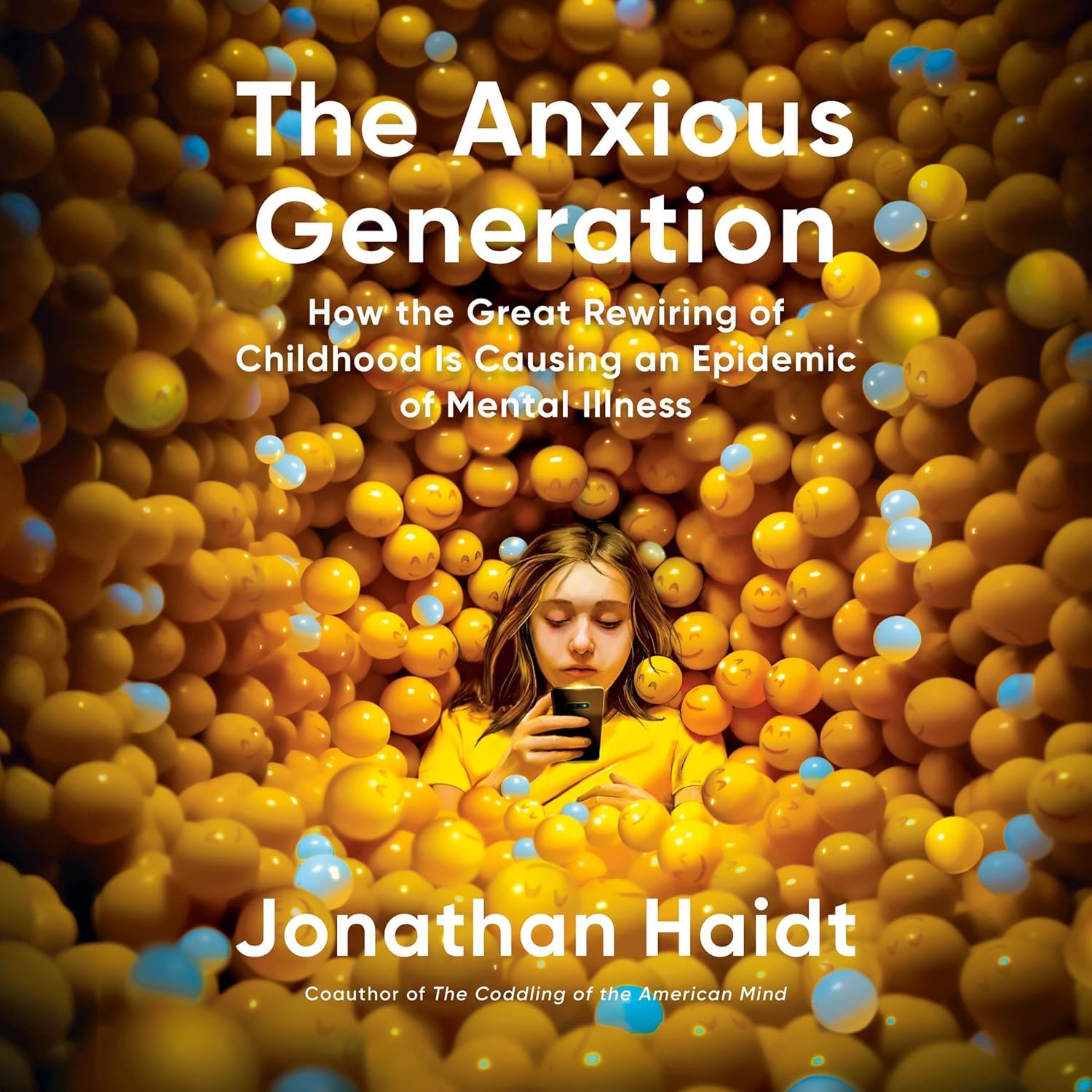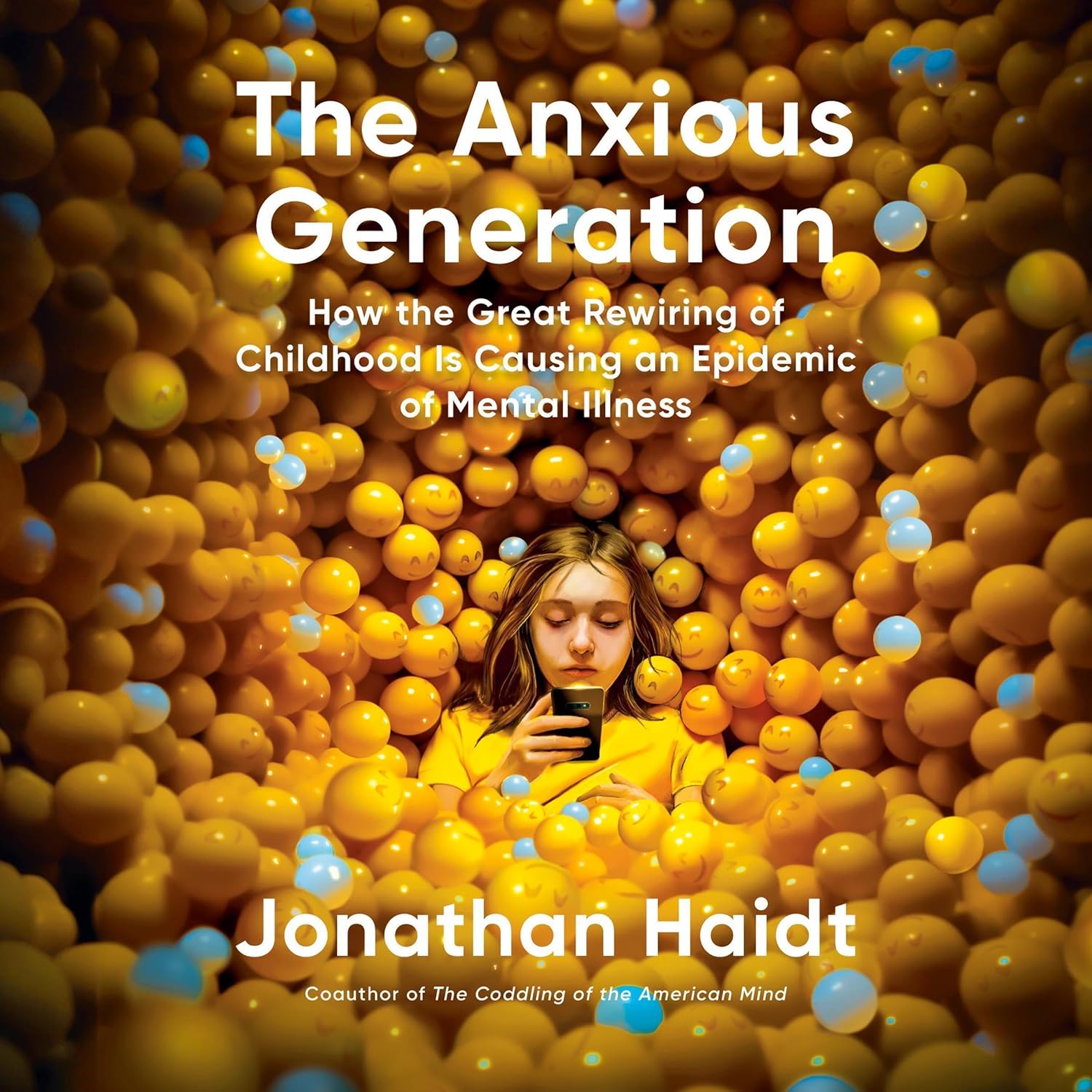Book Review: The Anxious Generation by Jonathan Haidt
As a passionate reader and parent, I often find myself drawn to books that explore the complexities of contemporary childhood. When I heard about The Anxious Generation, a profound investigation into the collapse of youth mental health in our digital age, I knew I had to read it. Jonathan Haidt’s reputation as a social psychologist, coupled with the urgency of the topic, made this title particularly appealing.
Haidt tackles a subject that is increasingly relevant: the alarming rise in mental health issues among adolescents alongside their growing dependence on smartphones and social media. This book, hailed as a #1 New York Times Bestseller and one of Barack Obama’s favorite books of 2024, explores the “great rewiring of childhood,” asserting that the experience of childhood has dramatically shifted since the 1980s, culminating in a troubling surge of anxiety, depression, and other mental health crises.
One of my favorite aspects of this book is Haidt’s straightforward and compelling writing style. He presents the research and statistics in a way that’s digestible and informative, making it clear why these shifts in childhood development matter. His exploration of how children need play and independent exploration to mature into competent adults resonates especially strongly with my own parenting experience.
I found Haidt’s examination of the mechanisms driving this change particularly enlightening. As noted in his research, the decline of a “play-based childhood” due to the advent of a “phone-based childhood” raises unsettling questions about our kids’ social and neurological development. Having grown up in a relatively screen-free environment, I often worry about how the constant digital stimuli affect my own child. Haidt’s insights reflect concerns I had but couldn’t articulate.
However, I did find some drawbacks in the book that must be acknowledged. While many readers praise the depth of research, some have voiced that the health benefits suggested in the book can feel somewhat vague. There are mixed reactions about the suitability of the advice for different age groups. For instance, while Haidt makes important suggestions for reducing screen time, transitioning from theory to practical application can be challenging for parents like me who understand the struggle kids face with social media.
Moreover, while the book certainly provides a plan for action, some readers found the conclusions to be somewhat simplistic. Haidt rightly emphasizes collective action among parents, teachers, and tech companies, but I felt that the nuances and complexities of individual circumstances could have been explored further.
Haidt also paints a stark picture of today’s youth who are constantly influenced by digital content, reinforcing the cycle of anxiety and distanced connection. For many parents, including myself, this is a hard pill to swallow. I couldn’t help but reflect on my own habits while reading the book on a digital device. It illustrated the irony that we can become so absorbed in the technology we critique.
Despite its shortcomings, The Anxious Generation is undeniably a wake-up call. It challenges us to confront the digital influences we accept without question and make conscious decisions about how we allow technology into our children’s lives. I wholeheartedly agree with Haidt’s sentiments that we can regain agency over our lives—and our children’s lives—if we make deliberate choices regarding our relationship with technology.
In conclusion, I highly recommend The Anxious Generation for anyone who is a parent, educator, or simply someone interested in understanding the evolving landscape of childhood and mental health in the digital age. Its informative content, bolstered by compelling statistics, provides an opportunity for reflection and action. This book serves as a valuable resource, urging us to reclaim a more humane childhood experience not just for our children, but for the well-being of society at large. Overall, I rate it a solid 4.5 out of 5 stars—an essential read in today’s tech-heavy world that prompts us to think critically about the future.








